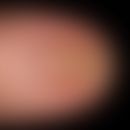Synonym(s)
DefinitionThis section has been translated automatically.
Unguentum emulsificans aquosum (syn. Water-containing hydrophilic ointment DAB (since DAB 2015 anionic hydrophilic cream) represents according to the definition of the European Pharmacopoeia (Ph.Eur.) a hydrophilic cream or an O/W cream and not an ointment. It contains 70% water (Note: according to the European Pharmacopoeia anhydrous hydrocarbon gels (e.g. Vaseline), lipophilic gels and lipo-gels are called ointments).
Note: Unguentum emulsificans aquosum is not to be confused with Unguentum emulsificans nonionicum aquosum. This differs from the aqueous hydrophilic ointment DAB by the type of emulsifier. This is replaced by polysorbate in the case of the nonionic hydrophilic cream DAB.
In Unguentum emulsificans aquosum the " emulsifying cetylstearyl alcohol (Ph.Eur.) is used. The "emulsifying cetylstearyl alcohol" represents a mixture of cetylstearyl alcohol and sodium cetylstearyl alcohol. Unguentum emulsificans aquosum can only permanently and stably absorb about 10 % of petrolatum. With higher proportions of petrolatum, a lavated incompatibility develops. After a few days the emulsionbreaks.
Unguentum emulsificans aquosum DAB is pre-preserved with 0.05 % sorbic acid and 0.07 % potassium sorbate.
Note(s)This section has been translated automatically.
For further information see below ointments, water absorbing.
Unguentum emulsificans aquosum SR DAC is the standard formulation (SR=standard formulation) listed in the former GDR and included in the updated DAC and NRF. The PHB esters used in the past have been replaced by a preservation with potassium sorbate/water-free citric acid. The DAB allows the use of Vaseline, the SR-DAC cream, however, does not.
LiteratureThis section has been translated automatically.
- Ewering I (2016) DAC base creams in the context of the classics. dermatologist 67: 670-672
- Wolf G (2014) Use of ready-to-use dermatics in individual formulations. Dermatologist 65:382-383



